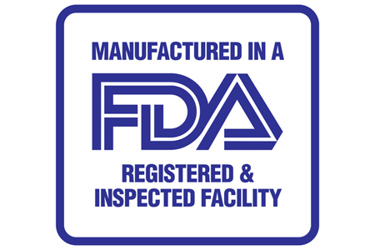FDA PreCheck Implementation Recommendations

By Louis Garguilo, Chief Editor, Outsourced Pharma

Early and earnest enthusiasm for the FDA’s PreCheck (documented here ) is a positive sign. We’re always looking for good ideas and policies from our regulatory agencies.
Already, there is an emerging consensus around the value of PreCheck's “decoupling new facility approvals from product-specific filings,” says Dhaval Rathod, Pharmaceutical Sciences group at Shionogi Inc. (USA)
Industry experts recognize this separation as transformative; it fundamentally alters the economics and timeline of establishing new manufacturing capacity.
This approach allows companies to gain confidence in their facility investments before committing to specific product portfolios, reducing financial risk and enabling more strategic capacity planning.
But as always, implementation and strategic initiatives to take advantage of this specific facility-approval regulatory reform will take efforts.
Rathod has a prescription for working with the FDA to ensure drug sponsors and CDMOs can fully utilize the PreCheck program.

Early and Frequent Communication
Perhaps the most enthusiastic industry response, says Rathod, has been centered on the program's focus on quick and informal feedback.
Indeed, Rathod believes the success of PreCheck participation “hinges on establishing effective communication channels with FDA from the earliest stages of facility planning.”
What this should mean is more frequent but less-stressful interactions.
Rathod says to facilitate these interactions, the FDA should have representatives dedicated to specific projects to enhance the quality and efficiency of interactions for the agency.
Drug manufacturers such as CDMOs should accordingly designate experienced technical professionals “as primary FDA liaisons to ensure technical discussions remain focused and productive, while actively embracing the less formal communication approaches that industry experts also advocate.”
Sponsors themselves should develop “a robust documentation strategy aligning with PreCheck requirements,” but, says Rathod, “leave room for future modifications.”
He suggests modular documentation systems work most optimally. This style of reporting and recording facilitate updates as facility designs evolve.
The caution here, says Rathod, “is to establish clear version control procedures for all FDA-submitted materials.”
Multiple experts agree to all of this. In fact, the biopharma industry is “explicitly calling for less formal, non-traditional interaction methods that can accelerate decision-making and problem-solving during facility development,” reports Rathod.
Several participants in an FDA meeting soliciting public comments drew parallels to FDA's Emerging Technology Program, suggesting that PreCheck could follow similar principles of early engagement and iterative refinement, but without the binding commitments required for new technology implementation.
All good, but ... there are also legitimate concerns about FDA's capacity to deliver on PreCheck's ambitious goals.
First among them is the burden on agency human resources. Stakeholders recognize the program's success depends not only on regulatory framework design, but on adequate staffing of expertise within FDA to provide timely, meaningful feedback.
For now, manufacturers appear to have “a remarkable willingness to share detailed facility and manufacturing data with FDA outside the traditional application context,” says Rathod.
This openness suggests an understanding of the benefits that early regulatory facility alignment represents, and those outweigh potential risks associated with more information sharing.
Manufacturers are advised to incorporate quality risk management (QRM) principles into facility design decisions to demonstrate clear understanding of manufacturing science and regulatory expectations.
Rathod suggests conducting failure-mode and effects analyses (FMEA) on critical facility systems; develop contamination control strategies based on product-risk profiles; and design flexibility into facilities to accommodate future product pipeline needs.
Looking Ahead To Facility Expansions
Above we referenced the recognized value of decoupling new facility approvals from product-specific filings.
“Stakeholder feedback to the FDA highlights strong interest in expanding the program beyond new facilities to include existing facilities undergoing significant modifications or implementing new manufacturing technologies,” says Rathod.
Such program expansion could accelerate the adoption of advanced manufacturing technologies, support the retrofit of existing facilities for pandemic preparedness, and enable more rapid response to drug shortage situations.
Certainly any development or manufacturing organization or individual site should consider the possibilities here.
Moreover, PreCheck principles applied across the CDMO industry would boost impacts on biotech development programs, as well as on pharma companies utilizing external manufacturers for commercial manufacturing.
For CDMOs serving various customers, PreCheck provides opportunities to build quality into manufacturing facilities from conception (or planning for upgrades), while reducing regulatory uncertainty.
Thinking big, this program presents the potential for increased formation of biotech entrants into the industry.
Drug sponsors want nothing more than current and potential CDMOs to possess the most up-to-date facilities fully backed by FDA approval and relationships.
The FDA PreCheck program represents a fundamental shift in how regulatory agencies and industry can collaborate to offer this ideal, and strengthen pharmaceutical supply chains – particularly in the U.S., which is the main objective of the FDA program.
---------
- The views and opinions expressed by Dhaval Rathod do not reflect the views of his employer, affiliated organizations, or any other entity --
